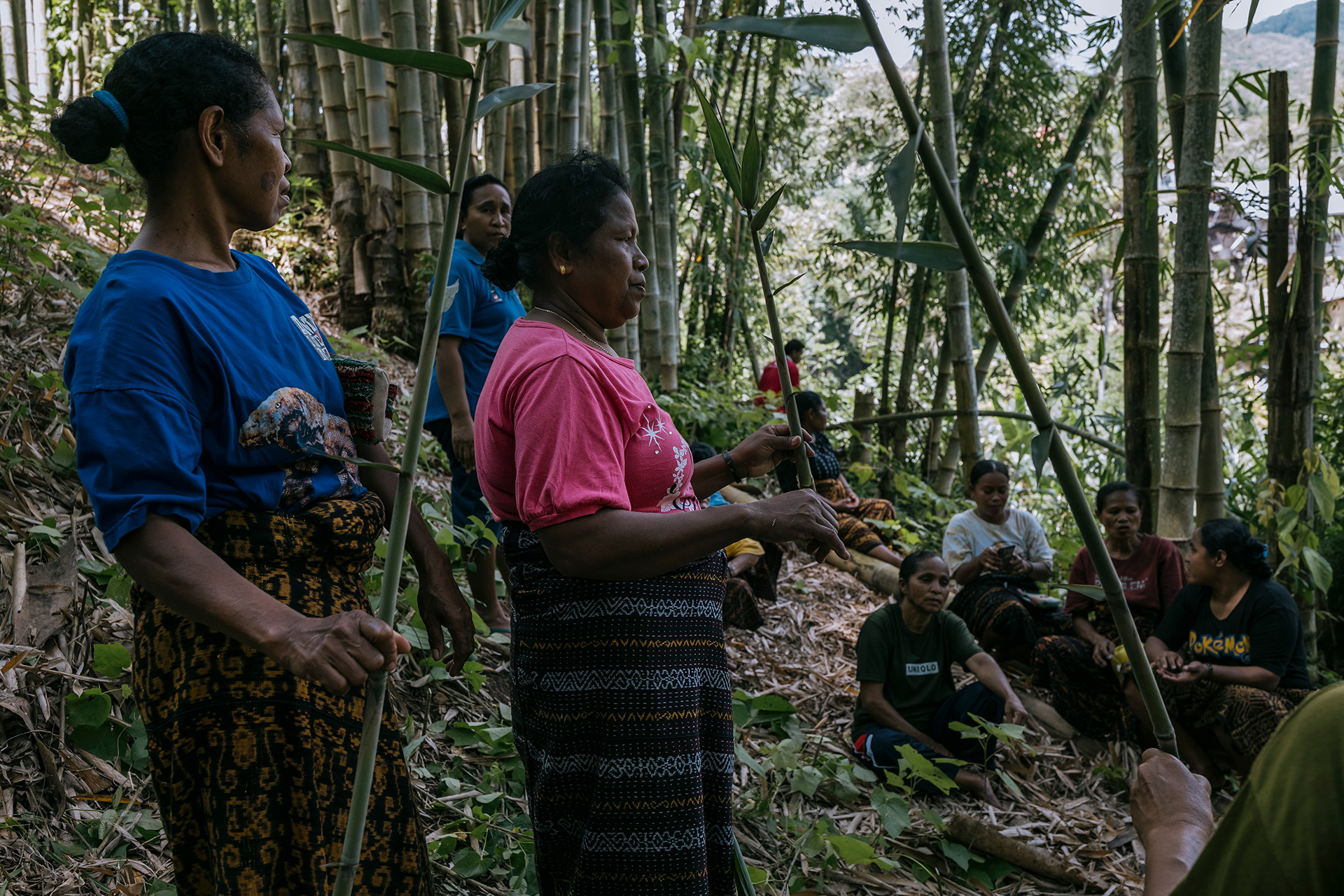
by Irpan | Sep 6, 2022 | Blog
In Ngada Regency, central Flores, thousands of people live in villages close to forest areas that are home to dense thickets of old bamboo. These towering green poles were not planted by the villagers, however, but by their ancestors. Before their involvement in EBF’s Bamboo Village program, most women in Ngada Regency had never propagated a bamboo seedling, but now their perspectives and participation are seen as the key to climate change mitigation.
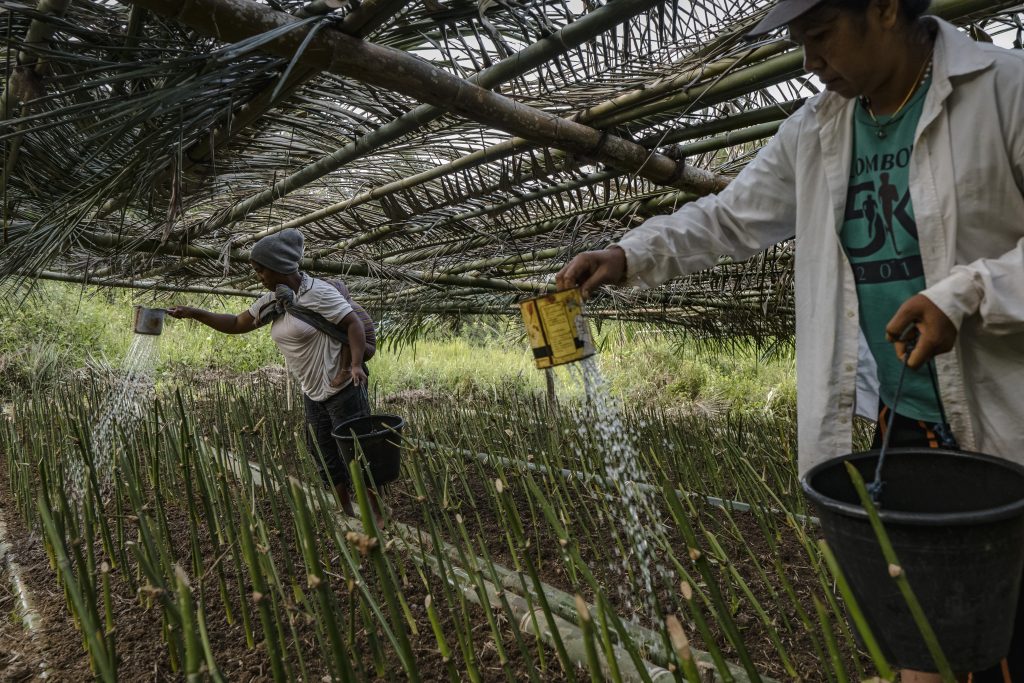
According to global advocate Women Deliver, the first steps toward sustainably tackling the climate crisis are to ensure that girls and women are recognized for their environmental solutions and have a seat at the decision-making table. Across the world, it is women who most often determine their family’s consumption of resources, and they also contribute significantly to agricultural production, land management and conservation. The UN has found that in rural regions where subsistence farming is common, women and girls are the primary providers of food, water and fuel.
Climate change directly impacts the availability of resources and makes tasks normally performed by women increasingly difficult. Combined with existing gender inequalities, it will come as no surprise that women and girls are disproportionately impacted by climate change and comprise the majority of climate migrants.
Further, according to climate change policy analyst Nina Jeffs, women’s participation in addressing climate change generates more effective and equitable climate outcomes. “Research demonstrates that due to socially prescribed gender roles, women assess risk differently to men and typically prioritize the welfare of their families and communities in resource-management decisions,” she writes.
This disproportional impact and urgent need to recognize women’s contributions and solutions is the driving force behind the joint statement published by the Scottish Government and UN Women at COP26, calling for the role of women and girls to be advanced in addressing climate change. It is also why EBF is now taking a ‘gender mainstreaming’ approach to its Bamboo Villages.
Gender mainstreaming is a strategy to achieve the goal of gender equality. According to the UN, its aim is to ensure that gender perspectives and gender equality are central to all project and program activities — development, research, advocacy, dialogue, legislation, resource allocation, planning, implementation, and monitoring and evaluation.
EBF incorporates gender mainstreaming through its Mama Bambu program, which provides space for women to be physically present in every decision making process regarding bamboo conservation and utilization in Ngada, while amplifying their views on the sustainable use of bamboo. Bamboo helps mitigate climate change in Indonesia in various ways, from carbon sequestration to environmental restoration.
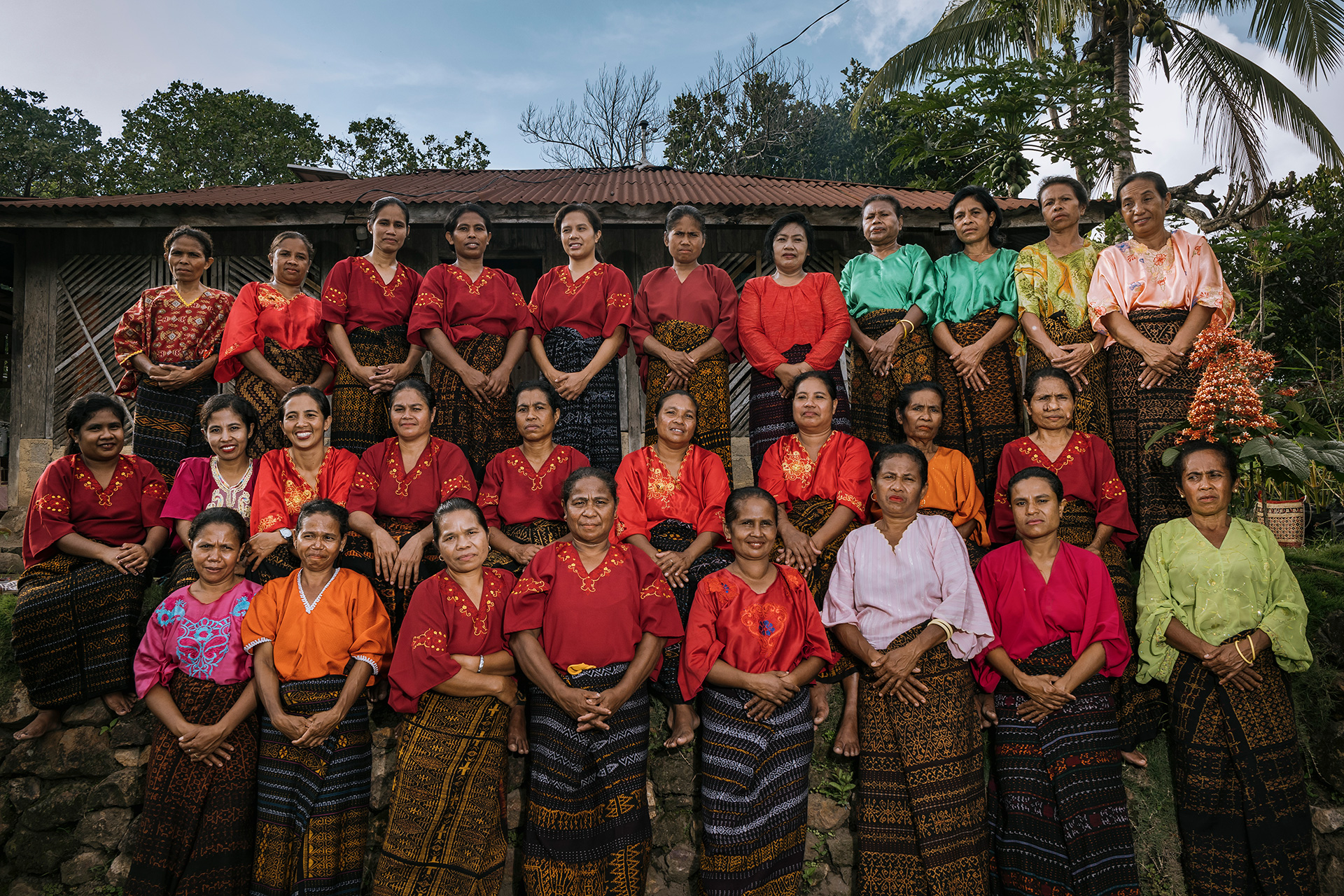
Monica Tanuhandaru, EBF’s Executive Director, has said that she hopes the gender mainstreaming approach will be used by Indonesia’s provincial and central governments so its benefits can me multiplied. “The women in the Mama Bambu program build their knowledge of how to look after forests, restore the land, and plant bamboo. In the longterm, it should become a national strategic project that could make a huge contribution to the development of Indonesia, borne from the hands of women.”
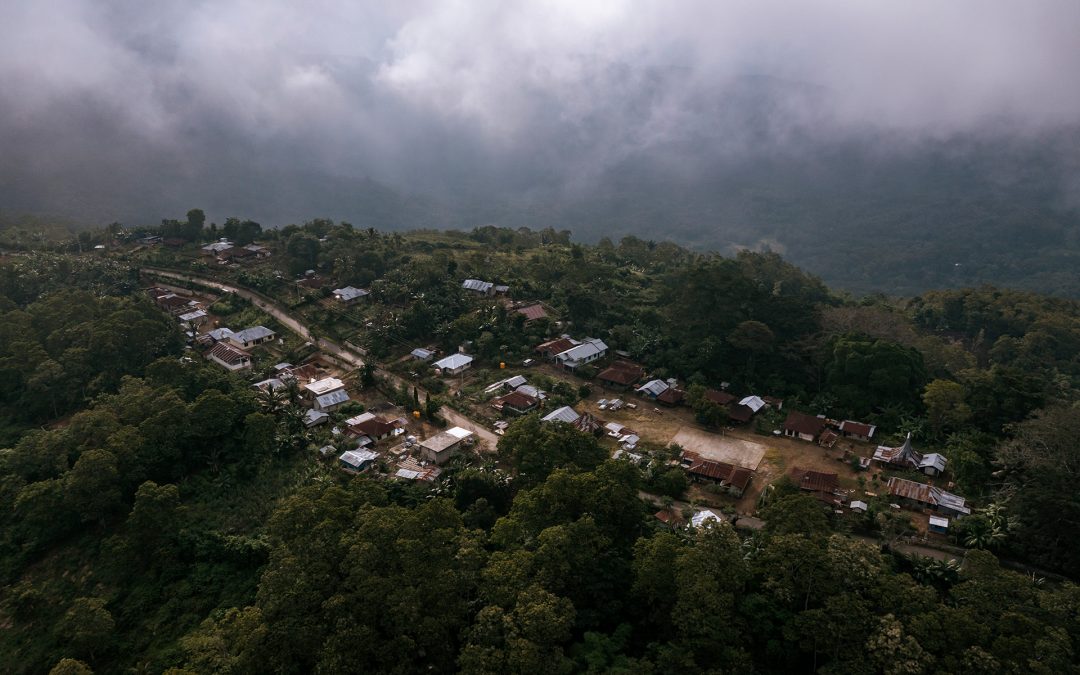
by Irpan | Mar 23, 2022 | Blog
It’s now common knowledge that the agriculture and transportation sectors account for a huge amount of global greenhouse gas emissions, but do you know what other industry contributes almost 40%?
Construction.
In addition to this staggering amount, the construction of buildings also accounts for 50% of the world’s energy consumption and 40% of raw materials, according to the World Economic Forum. This is exactly why this year’s global climate summit, COP26, held an online exhibition of the world’s greenest buildings, to showcase construction that mitigates climate change and limits the environmental impact of buildings and cities. One of seven of the world’s most sustainable buildings exhibited at COP26 is right here in Indonesia, and we’re sure you can guess what it’s made of.
As well as being one of the world’s most sustainable and versatile building materials, bamboo helps mitigate climate change in Indonesia in various other ways, from carbon sequestration to environmental restoration. Read on to learn more.
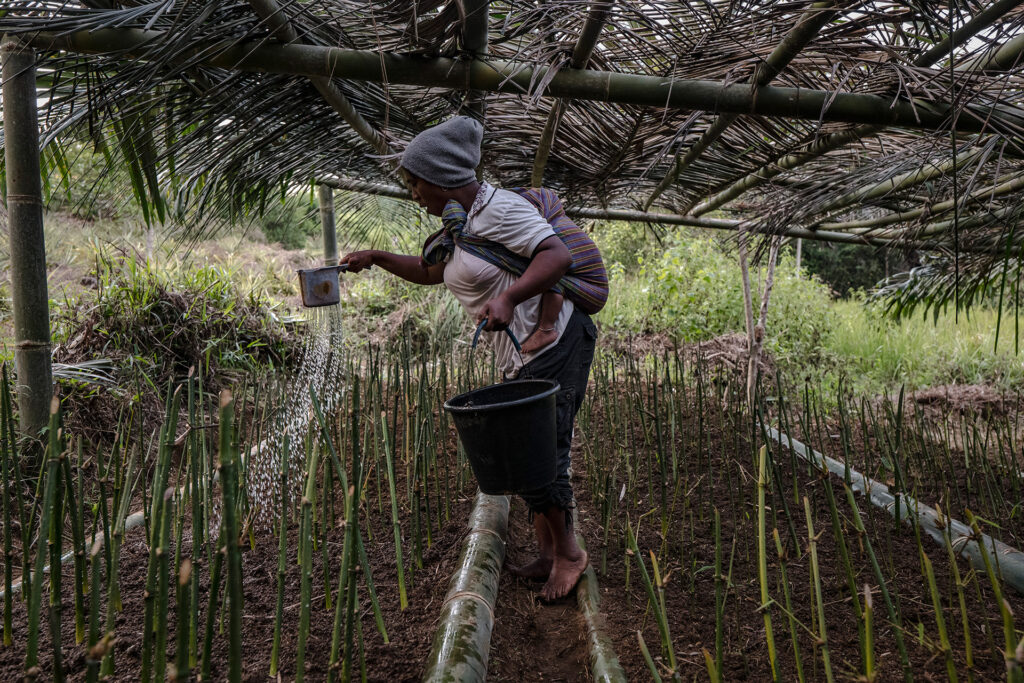
Large-scale carbon sequestration
Bamboo forests sequester carbon in their biomass and in the soil in which they grow, and can store 50 tonnes of carbon per hectare per year — rates that are superior to a number of tree species. Long-lasting products made of bamboo can also store carbon over time, and as they encourage the expansion of bamboo forests, they even have the potential to be carbon-negative.
From Sumatra to Sulawesi, Indonesia is home to 135 of the world’s 1,250 bamboo species, and almost 2 million hectares of bamboo forest. These species grow in a vast range of environments, from low-lying peat swamps to altitudes of up to 2,500 meters. The carbon-capturing potential of these bamboo forests has been acknowledged by Indonesia’s provincial and central governments, with a national strategy to develop the industry to be released by the end of the year.
Reducing deforestation, increasing land restoration
From 2010 to 2020, Indonesia lost approximately 6% of its forest area. This situation means that the country is experiencing the fourth highest global rate of deforestation after Brazil, the Democratic Republic of Congo, and Bolivia. Further, deforestation and land conversion for commercial crops contribute 15 to 25% of global carbon emissions.
As the world’s fastest growing tropical plant, and with a variety of construction uses from large-scale buildings to furniture, bamboo offers a viable alternative to hardwoods, which can help reduce deforestation.
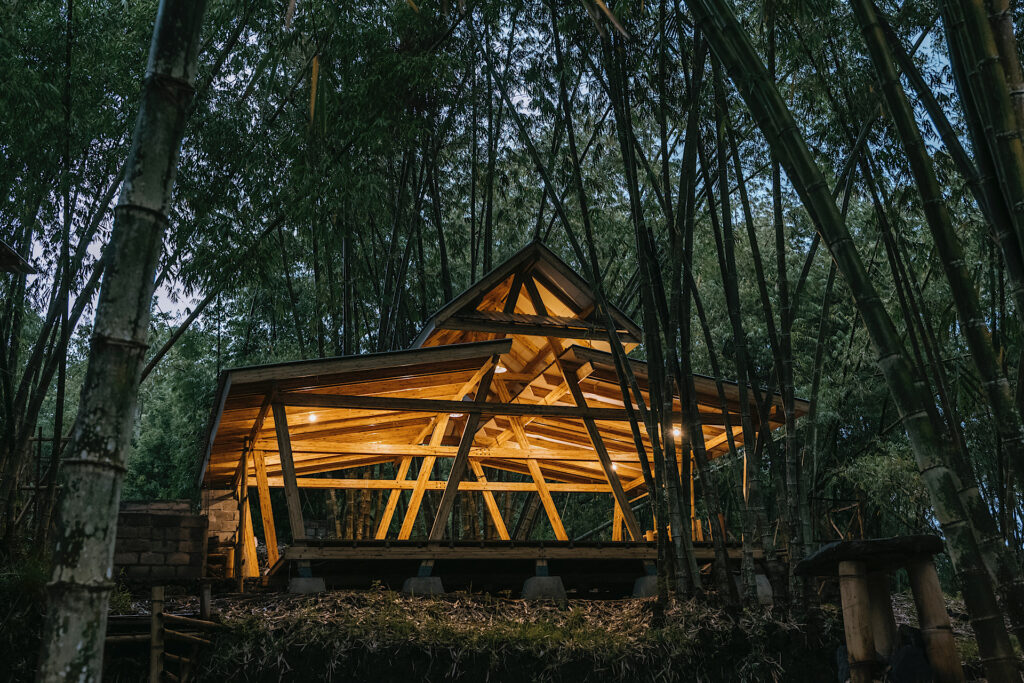
It has also been called a “powerful ally” in land restoration. There are over 24 million hectares of degraded lands and lands being used to plant crops in Indonesia. Bamboo’s sturdy and robust root systems help regulate water flows, prevent erosion, and even reduce the severity of landslides. It also grows well in degraded soil and even on steep slopes, making it the ideal plant for land restoration.
Climate change adaptation
Because it grows so quickly and abundantly, bamboo can be harvested frequently, providing farmers with a year-round source of income and the ability to diversify their income streams. Reduced vulnerability to crop failure and relative financial stability can enable farmers to adapt their harvesting practices in response to changing climate conditions.
As the International Bamboo and Rattan Organization, which promotes environmentally sustainable development using bamboo and rattan, writes, “Bamboo alone will not solve the world’s climate change problems. But, if this strategic resource is properly harnessed, it offers practical solutions to climate change mitigation and adaptation.
For centuries, rural communities across Indonesia have harvested bamboo for food, fuel, and shelter. It’s now time for bamboo to form a central pillar of the nation’s efforts to increase sustainability, reduce poverty, and mitigate climate change.

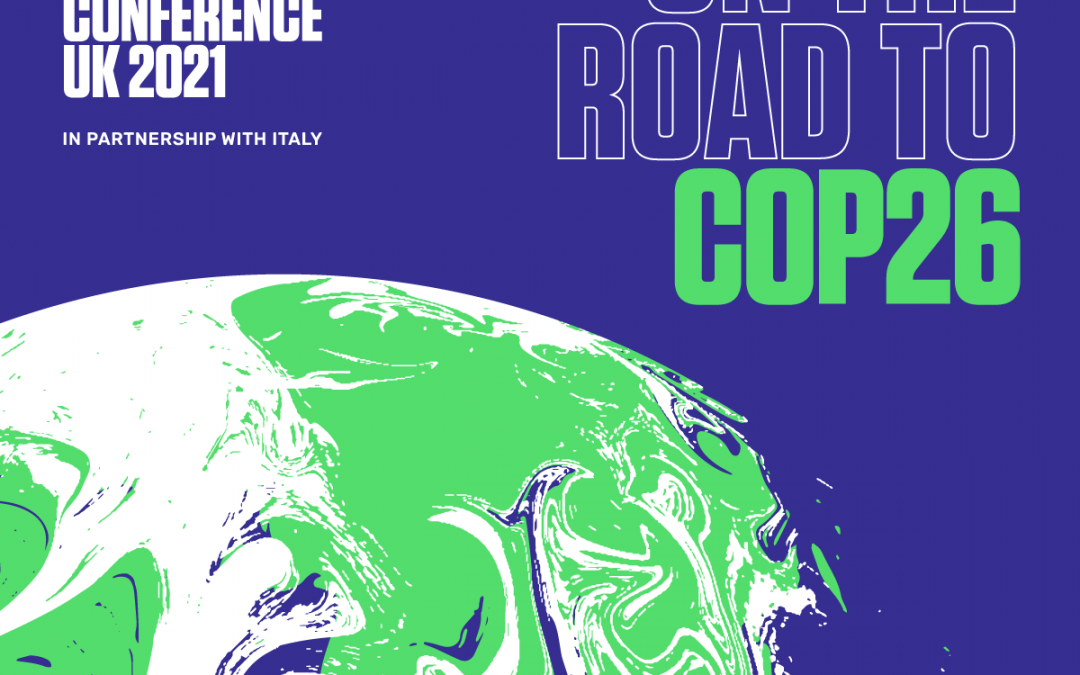
by Irpan | Oct 19, 2021 | Blog
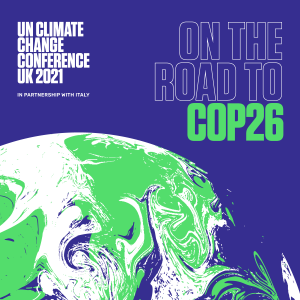
The UK will host the
26th UN Climate Change Conference of the Parties (COP26) in Glasgow on 31 October – 12 November 2021. The COP26 summit will bring parties together to accelerate action towards the goals of the Paris Agreement and the UN Framework Convention on Climate Change.
The Environmental Bamboo Foundation (EBF) is partnering with the Indonesian Ministry of Environment and Forestry for two key Indonesia Pavilion events in alignment with the main themes of Scaling-up Adaption; Keeping 1.5° C alive; Loss and Damage; Finalising the Paris Rulebook – Article 6; and Mobilising Finance. The Indonesia Pavilion will showcase real actions that are being and have been taken by Indonesia.
The two panels are Bamboo Partnerships for Climate Change Mitigation and Adaptation and Women Saving The Planet: Gender Equality in the Fight for Climate Change.
In the lead up to COP26, EBF has been holding a number of Instagram Live events, featuring Arief Rabik in conversation with friends and fellow activists, including Happy Salma on ‘Women on the frontlines of climate change‘, Sam Branson on ‘Fighting for a cause’, and Indonesia’s Minister for Education, Nadiem Makarim discussing ‘The role of education in climate change’.
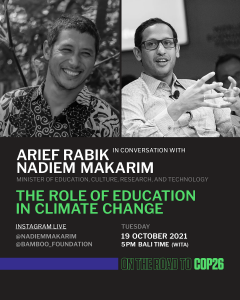
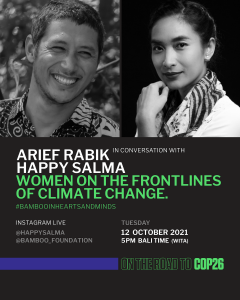




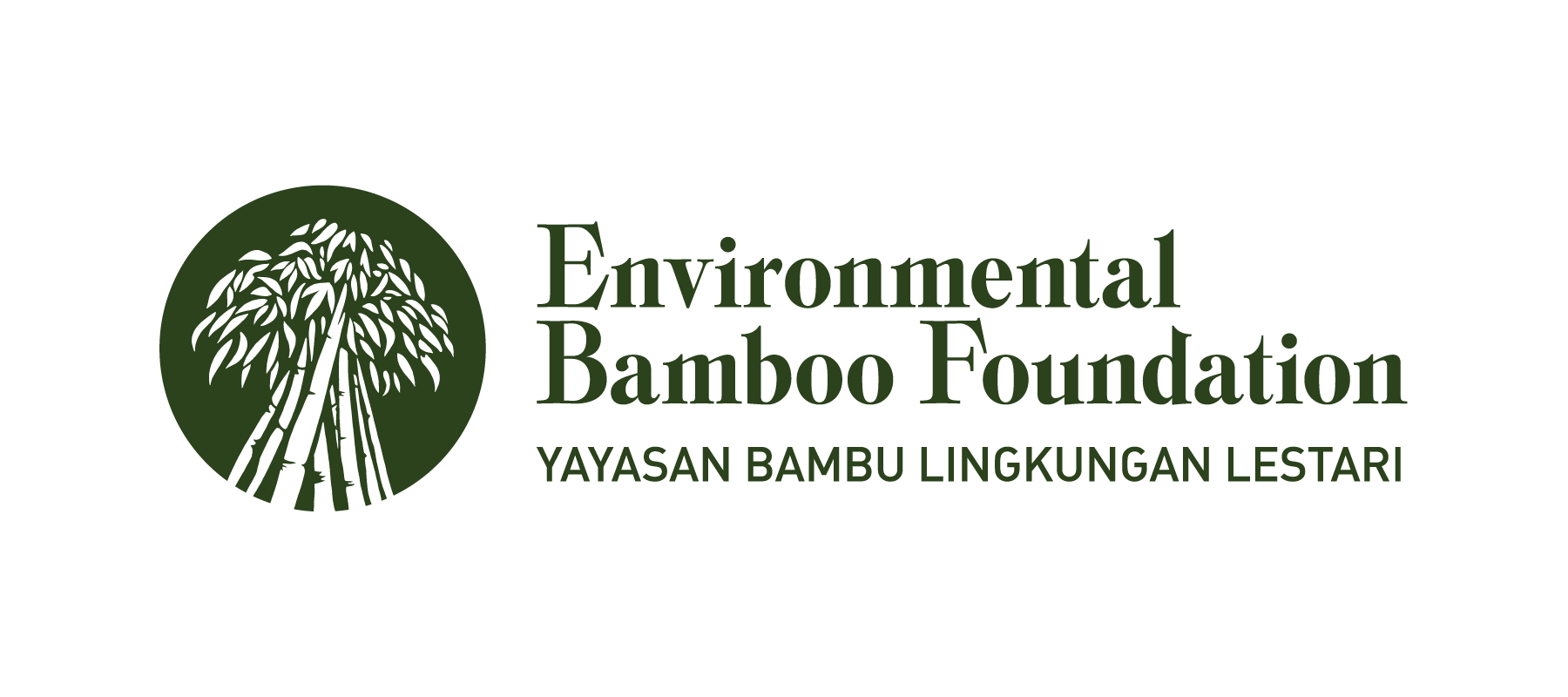





 The UK will host the
The UK will host the 


Recent Comments